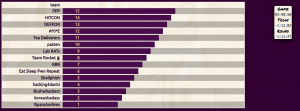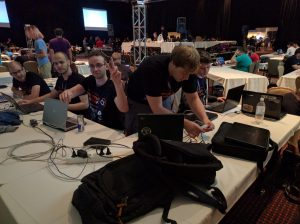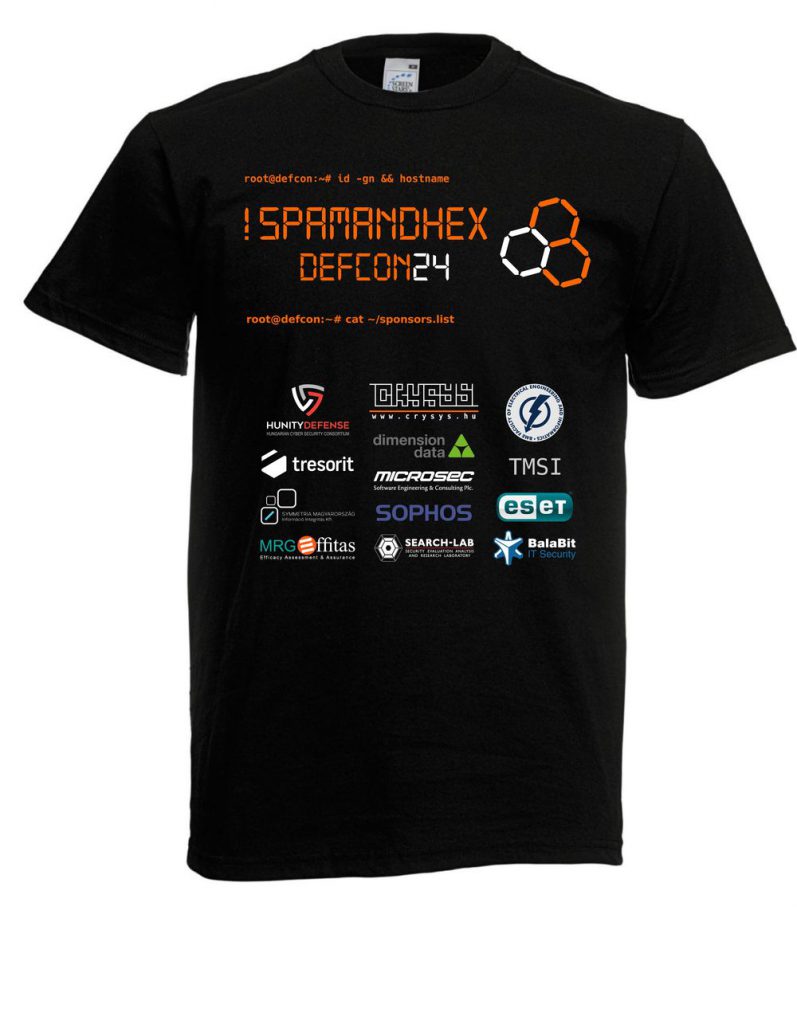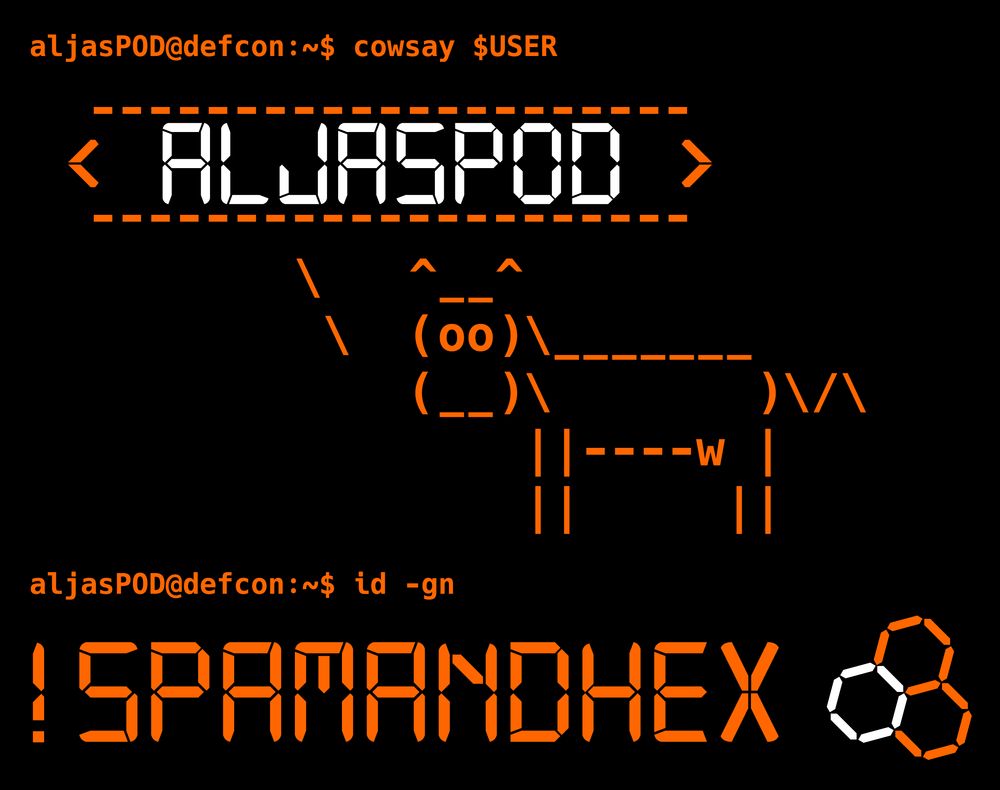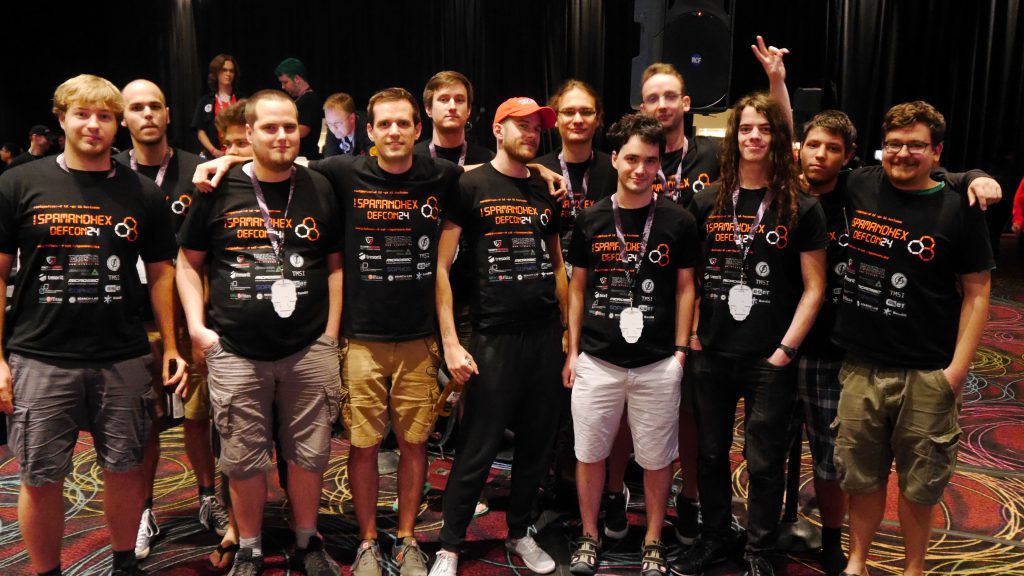Category: CrySyS
SIMBIoTA: Similarity-Based Malware Detection for the Internet of Things
CrySyS Lab researchers developed a new anti-virus solution running on resource constrained embedded IoT devices.
Embedded devices connected to the Internet are threatened by malware, but no anti-virus product is available for them. Anti-virus products developed for traditional IT systems have higher resource needs than that offered by embedded IoT devices. The required amount of free storage space and memory to run these products is often measured in gigabytes, which exceeds the capacity of typical IoT devices, such as WiFi routers, IP cameras, smart house hold appliances, wearable devices, etc. In addition, many existing anti-virus products do not even support the operating systems (typically some embedded Linux or some more exotic OS) used on IoT devices. Therefore, they could not be installed, even if a particular IoT device met their system requirements.
Continue reading SIMBIoTA: Similarity-Based Malware Detection for the Internet of ThingsEgyüttműködési megállapodás a Microsec Zrt-vel
Örömmel jelentjük be, hogy a CrySyS labor együttműködési megállapodást kötött a PKI alkalmazásában és fejlesztésében úttörő szerepet betöltő Microsec Zrt-vel.
A két szervezet az elmúlt években is aktív kapcsolatot ápolt, mely keretében a Microsec anyagi és tárgyi eszközökkel támogatta laborunk kutatómunkáját, valamint a laborból indult etikus hackercsapat, a !SpamAndHex külföldi versenyeken való részvételét. Jelen megállapodással a Microsec célja a PKI-val kapcsolatos kutatás-fejlesztési és innovációs tevékenységek kiemelt támogatása, az egyetemi kapcsolatok erősítése, a kutatásokhoz első kézből információk szolgáltatása a gyakorlati problémákkal kapcsolatban. A labor számára az előnyt a tehetséggondozási programunk anyagi támogatása, valamint érdekes, az ipari gyakorlathoz kapcsolódó kutatási feladatok megfogalmazása, és a stabil ipari kapcsolat jelentik.
A PKI kutatások területén a jövőben a labor a Microsec kihelyezett kutató laboratóriumaként működik, és közös publikációk megjelentetésére törekszik.
DEFCON '17 – A verseny
A Föld legelismertebb hacker versenye a DefCon konferencia Capture-the-Flag versenyének döntője, amit minden évben Las Vegas városában rendeznek, idén már 21. alkalommal. Az előző évekhez képest változás volt, hogy az eddig megszokott Bally’s helyett a Caesars Palace-ben rendezték meg a versenyt. A döntőbe jutáshoz egész évben rendeznek kvalifikációs versenyeket, és nagy örömünkre hackercsapatunk, a !SpamAndHex idén is részt vehetett a döntőben, immár harmadszorra.
A döntő egy több napos esemény, ahol a világ legjobbjai mérik össze tudásukat és stratégiájukat, idén 15 csapat. Mert ugyan nagyon fontos megtalálni és javítani a hibát, valamint a sikeres támadás pontot ér, de ez nem minden. A versenyen valóshoz közeli szituációban kell helyt állni: a csapatoknak a sérülékenység-keresés és a titkos információk megszerzése mellett IT rendszert is kell üzemeltetniük. És ha nem elérhető egy szolgáltatás, akkor a csapat pontokat veszít, mert a való életben sem örülünk, ha nem férünk hozzá a szükséges szolgáltatáshoz.
És itt jön képbe a stratégia. Ha sikeresen támadunk a versenyen és megszerezzük a titkos információt, pontot nyerünk. Ha nem elérhető egy-egy szolgáltatás, pontot veszítünk. Viszont minden csapat ugyanazokat a szolgáltatásokat üzemelteti, vagyis ha megtámadunk valakit, azzal nem csak pontot szerzünk, hanem a hibára is rávezetjük a másik csapatot. Ráadásul mutatunk nekik egy működő támadást, amit akár ellenünk is felhasználhatnak. Szóval védekezni is kell: ha megtaláltuk a sérülékenységet, nem csak ki kell használnunk mások rendszerében, hanem javítanunk is kell a sajátunkban.
Az üzemeltetési felelősség miatt a csapatok kapnak némi felkészülési időt, hogy kiismerjék a rendszert, amiért felelnek. A döntőben ez a verseny kezdete előtti nap volt. Itt találkoztunk először a cLEMENCy platformmal, ami nagyon távol áll a megszokott IT rendszerektől. Hagyományos rendszerekben a memóriában a legnagyobb helyi értékű számjegyet vagy a szám végén (big-endian), vagy a szám elején (little-endian) szokás tárolni. Ezzel szemben a cLEMENCy middle-endian, vagyis a legnagyobb helyi értékű számjegy a szám közepén helyezkedik el. Ez kihívássá teszi a memória olvasását és értelmezését, ráadásul nem léteznek kész eszközök, amik ezt kezelni tudnák. Arról nem is beszélve, hogy a cLEMENCy-n minden byte 9 bitből áll az általánosan megszokott 8 helyett. Vagyis adott egy nagyon különleges platform és egyetlen egy nap (!), hogy elkészüljenek azok a szoftverek, amelyek segítenek a platformra készült feladatok megoldásában.
Alapvetően háromféle szoftverre van szükség: assembler, wrapper és disassembler. Először az assemblert készítettünk el, hogy a saját magunk által írt programokat lefordíthassuk a cLEMENCy platform nyelvére és futtathassuk azt. A futtatáshoz egy emulatort kaptunk, vagyis nem egy fizikailag létező számítógépen futottak a feladatok, hanem egy kibertérben futtatott számítógépen. Az emulator köré készítettük el a wrappert, hogy szüneteltethessük a programok futását és futás közben megnézhessük a memória, valamint a regiszterek tartalmát. Ez sokat segített hibakeresés közben, de még mindig hiányzott a disassembler. Ugyanis a futtatható binárisok értelmezését és visszafejtését nem gépi kód szinten szoktuk végezni, hanem megpróbálunk visszalépni az ún. assembly szintre, ami ugyan sokkal kevéssé olvasható, mint egy jól ismert programozási nyelven írt forráskód, de legalább az utasításokat és operandusaikat nem számokként látjuk, hanem olvasható formában tudjuk értelmezni.
A verseny első napján a szervezők reggel 9 órakor nyitották meg a CTF termet a versenyző csapatok előtt. A csapatok 1 órát kaptak, hogy felállíthassák hálózataikat, majd 10 órakor megkezdődött a verseny.
A tavalyi megmérettetéshez hasonlóan a csapatok szolgáltatásai egy központi helyen futottak. A szolgáltatásokhoz tartozó futtatható binárisokat egy webes felületen lehetett lecserélni, azonban minden csere látható volt minden más csapat számára. Ezt az jelentette, hogy akár egy másik csapat által készített futtatható binárist is használhatott egy csapat. Ez azonban veszélyeket is rejt magában. Ha értelmezés nélkül kezdenénk el lecserélni a futtatható binárisainkat azokra, amiket a többiek készítettek, előfordulhat, hogy hátrányba kerülünk a többiekkel szemben, mert pl. nem képes futni a progam, vagy rejtett csapdát helyeztek el benne a készítők.
A legelső feladatot rubix névre keresztelték a szervezők és a Rubik-kocka megoldását implementálta. Az első dolog, ami megütötte a szemünket, az volt, hogy a program az emulátorban csak bináris adatokat jelenített meg a képernyőn. Ezért nagyon gyorsan le kellett fejlesztenünk egy kisebb szoftvert, ami a 9-bites bájtokat lefordította 8-bites bájtokra. Ezután tudtuk csak elkezdeni értelmezni a feladat kimenetét. Ezt a feladatot először a HITCON csapat oldotta meg, majd lassan a többi csapattól is elkezdtek beérkezni a megoldások.
A nap folyamán további 2 feladatot adtak ki a szervezők, amiket szinten a HITCON csapat oldott meg elsőre. Összesen 10 órán keresztül tartott ez a nap, ami elég fárasztó volt. Sikerült támadást készítenünk a rubix feladathoz és két másikhoz is. Azonban hamar rájöttünk, hogy az eszközeink nem elég hatékonyak, nem tudjuk elég gyorsan megérteni a futtatható binárisok működését. Ezért egyre nagyobb hangsúlyt helyeztünk a hálózati forgalom elemzésére is. A célunk az volt, hogy a hozzánk érkező hálózati forgalomból ki tudjuk emelni a támadásokat, amiket más csapatok indítottak ellenünk. Azonban ez csak első olvasásra ilyen egyszerű, mivel a folyamat tele volt hamis riasztásokkal a szervezők által beszúrt direkt félrevezető forgalom miatt. Ráadásul a hálózatelemző szoftvert (Wireshark) is át kellett írnunk, hogy 9-bites bájtokkal dolgozzon.
A második nap végére a 15. helyen álltunk.
A verseny utolsó napja már csak 4 órás volt. A korábbi évekhez hasonlóan a scoreboardot nem láthattuk így csak az előző este eredményeire lehetett támaszkodni. Ez a nap is egy új szolgáltatással indult babyecho néven, ami gyakorlatilag egy nagyon egyszerű format string sérülékenységet tartalmazott. A feladat érdekessége az volt, hogy a nyilvánosságra hozatalt követően 1-2 percen belül a Tea Deliverers már meg is oldotta. A verseny után a szervezőkkel beszélve Ők ennek kapcsán arra gyanítanak, hogy már előtte valahogyan meg tudták szerezni a binárist és úgy dolgoztak rajta előtte. Az persze kérdéses, hogy a verseny szabályzatával ez mennyire összeegyeztethető, de ezt most nem célunk megítélni. A lényeg, hogy ezt sérülékenységet mi is sikeresen kihasználtuk és javítottuk. A méréseink alapján az utolsó napon még 3 támadásunk sikeresen szerzett és küldött be flageket.
A verseny a szokásos módon a ‘Europe – The final countdown’ klasszikusával ért véget 2 órakor. A verseny után beszélgettünk több csapattal köztük a Shellphish-sel Santa Barbarából, a pasten-nel Izraelből vagy például az Eat, Sleep, Pwn, Repeattel Németországból.
A verseny záró eseményén a szokásokhoz híven csak az első három helyezettet sorolták fel, akik név szerint az immár negyedszerre győztes (és ezáltal a legsikeresebb csapat a DEFCON 21 éve alatt) PPP (USA), HITCON (Taiwan), A0E (Kína). Őszinte gratuláció a csapatoknak ezért a hihetetlen eredményért!
Összességében elmondható, hogy a tavalyi évhez hasonlóan nagyon sokat számított, hogy egy adott csapat milyen eszközkészlettel rendelkezett a verseny megkezdése előtt, illetve mennyire ügyesen tudta ezeket a toolokat felhasználni. Nálunk sajnos ezek nem tudtak eléggé kiforrni a verseny ideje alatt, így elég nagy hátrányban voltunk a verseny többi szereplőjéhez képest. Ettől függetlenül úgy gondoljuk, hogy ismét nagyon sok gazdag élménnyel gyarapodtunk.
Végül, de nem utolsó sorban hivatalosan is megköszönjük minden támogatónknak, hogy lehetővé tették a kiutazásunkat és ezáltal szerepelhettünk ismét ezen a világszintű megmérettetésen. A verseny tényleges eredményétől függetlenül büszkék vagyunk arra, hogy a világ 15 legjobb csapata között tudhatjuk magunkat évről évre és ezáltal nemcsak magunknak és a CrySyS Labornak, hanem talán az egész országnak is öregbítettük a hírnevét.










Defcon 2017 CTF – kezdetek
A CrySyS Lab egy olyan szervezet, ami folyamatosan fejlődik, átalakul, szervez, csinál, kitalál, megold, és úgy általában, aktív és dolgozik. Van egy hacker csapatunk, a neve !SpamAndHex. Van saját twitterük is https://twitter.com/SpamAndHex.
De mit csinál egy hacker csapat? A black hat hacker feltör rendszereket a saját előnyére, a white hat hacker biztonságosabbá teszi az Internetet, azáltal, hogy a felfedezett hibákat kezeli. A responsible disclosure az a folyamat, amikor egy hacker felfedez egy hibát, és azt nem csak úgy beleönti az Internetbe, hanem felelősségtelejesen segíti a hibát elkövető céget, hogy ki lehessen azt javítani. Az ethical hacker egy white hat hacker aki felkérésre dolgozik, általában pénzért.
A hacker csapat viszont más. A hacker csapat hacker versenyeken versenyez. Minden nagyobb biztonsági konferenciának van hacker versenye, ezeket többnyire CTF-nek (Capture The Flag) hívják, ami a hagyományos zászlófogásos harci játék megfelelője akar lenni. Itt azonban a flag többnyire egy titkos információ, ezt kell megszerezni egy szolgáltatás megtörésével, egy kriptográfiai feladat megoldásával, vagy bármi más hasonlóval. Hacker feladattal. A feladatokat más hackerek készítik, a szervezők. Nem éles rendszereket kell feltörni, hanem valóshoz hasonló megoldásokat. Például egy banki rendszerhez hasonló megoldást, melynek a biztonsági problémája hasonló egy valódi bankban potenciálisan elkövetett hibával. Vagy feladat lehet egy hangfájl analízise, amely fájlban valaki elrejtett egy titkos információt.
A hackercsapatok versenye tehát arról szól, hogy ki érti jobban a hacker technikákat, ki gyorsabb, okosabb, ügyesebb. Nem ezért, hogy majd jól feltörje a szomszéd hálózatát, hanem azért, mert ezzel a tudással jót tud tenni. Megvédeni a céget, az országot, megtalálni a hibát a hálózatban, a programban, kezelni a beeső támadásokat vagy éppen feltárni egy korábban elkövetett támadás menetét a nyomokból. Tehát megvédeni a világot.
Sokféle verseny – sokféle feladvány. Nem egy konferencia van, nem egy CTF verseny, hanem tucatszámra bonyolított versenyek. Senki nem tud indulni mindegyiken. A legjobb értékmérő talán a CTFTime.org. Ők összegzik az összes hackerverseny eredményét, súlyozzák azokat és végül kibökik, abban az évben melyik csapat hogyan teljesít. Most éppen a !SpamAndHex 18. éves szinten, de voltunk már 5. helyezettek is. Ötödiknek rangsorolt csapat a Földön! Szerintünk ez nagyon durva. A 18. helyezés is olyan, hogy nagyon durván jó. És nyilván függ a helyezés a tudáson túl attól is, hogy mennyi idő marad a csapatnak egy évben több tucat versenyen részt venni. (A felkészülésre is kellene idő persze…). Egy ötödik hely olyan, hogy csak négy országot tudsz elénk képzelni, pedig nem egy informatikában fejlett ország van a világban. Találgass, ki végzett előttünk!
Szóval van egy hacker csapatunk. A Föld (világot nem írok, hátha vannak kint is) legelismertebb hacker versenye a DefCon konferencia CTFdöntője Las Vegas városában. Ez a konferencia már évekkel ezelőtt is kb. 20 000 fős volt, olyan tömegrendezvény, amit nehéz elképzelni. 1000 fő fölötti előadótermeknél nem lehet bejutni, mert telt ház van az aktuális előadásra. Olyan konferencia, ahol a sima buheráció, a hackelés, vagy éppen a cosplay is összejön. Állsz a folyosón és szembejön egy terminátornak beöltözött ember, és ezen a legkisebb mértékben lepődsz meg. Viszont az árnyoldalakról is érdemes megemlékezni: alig jutsz be előadásokra, mert későn érsz oda, az ebédre meg beállsz egy olyan gyorsétterem sorába, ahol 1 óra várakozással bírsz venni egy hamburgert. A magyar árak duplájáért.
Küldtünk hírt korábban: A !SpamAndHex bejutott a DefCon döntöjébe, ahova 15 csapat kerülhet a Földről. Nem először jutott ide be a csapat, hanem sorban a harmadik alkalommal. Ez nyilvánvalóan nem véletlen. Köszönjük a Forbes hasonlatát, egyben gratulálunk Hosszú Katinkának a friss eredményeihez, boldogság, ha sikereinket hozzá hasonlítják. Szóval most indul a döntő. Fontos látni: nem az a kérdés, hogy megnyerjük-e vagy 15. helyezést fogunk elérni. Az a lényeg, hogy ott vagyunk, harmadszorra. Az a lényeg, hogy a kimenő csapatainkat ismerik, elismerik, beszélnek velük. Az, hogy már sok helyen tudják, milyen a magyarok hacker csapata. Ebben az évben a hacker csapat már kb. 5 olyan külföldi versenyen is részt vett, ahol helyileg is meg kellett jelenni, nem csak távolról versenyezni, és ezek többségében a szervező fizette az útiköltségeket is. Körbebarangolni a világot Oroszországban, Kínába, Lengyelországan, vagy éppen most (szponzori támogatásból) Amerikában, azért az álma lehet sok diáknak. Várjuk, hogy ők is a csapatunk tagjai legyenek egyszer.
Szponzoraink:










!SpamAndHex at the 24th DEFCON CTF Finals
Yes, we did it again. We played against the best teams in the world at the 24th DEFCON CTF Finals in Las Vegas. However, it was not as easy as it seems to be.
This year was fairly different from any other years before. For the first time in human history, teams had to play against the DARPA Cyber Grand Challenge (CGC from now on) winner machine Mayhem from ForAllSecure. Before we go into the details of the DEFCON CTF, let’s check what happened in the finals of the CGC machines.
One day before the 24th DEFCON CTF Finals took place, 7 selected machines fought against each other to win the CGC and play with human teams. The competition was launched in the morning on August 4, but only the last couple of hours were open to the public. The very first thing that caught our eyes is the huge effort that DARPA invested into the event.
Competitor machines stood on a stage in an air-gapped setup. Their tasks were three-fold:
- find vulnerabilities in CGC binaries
- generate a Proof of Vulnerability (PoV a.k.a exploit)
- patch the vulnerability with a maximum of 5% performance lost. This was a strict and essential condition of the game.
The gaming hours were divided into 96 rounds under which 82 challenges were selected for the machines. Long story short, Mayhem turned to be the winner and ForAllSecure won 2 million USDs. Congratulations!
Next day, the DEFCON CTF finals started with a few hours of delay due to some initial issues that Legitimate Business Syndicate (the DEFCON CTF organizer team) had to solve. The game was designed to operate with 5-minute rounds so as to accumulate the points for each team after each round. So 14 human teams and a machine, Mayhem. Similarly to previous years, the challenges were released gradually, however, the teams could not attack each other directly. They created patches and PoVs for vulnerable CGC services, and submitted them on a central site. This year, the tooling and the strategy of a team played crucial roles in the competition. Simply, you could not do anything without understanding the CGC platform. The most important thing of all was, however, the patching strategy. After patching a service it was stopped for the next round, so it was not available. As I mentioned above, performance played a key role in the competition: the more vulnerabilities you patch at once the more points you will have. One more important thing: a PoV could only slow down other teams, but you did not get points for them directly. If a team did not play this strategy, he could not perform well. Unfortunately, we put much more emphasis on PoVs than on a good patching strategy. At the beginning of day 3, we were the 11th team out of 15, then the scoreboard was hidden away for the last 4 hours. For the final results we have to wait a couple of weeks.
On one hand, we see that a better strategy could have brought us better results. On the other hand, however, we are really happy to get into the Finals for the second time in a row. Similarly to last year, we could not have realized our goal of participating in the DEFCON CTF Finals without the generous support of our sponsors. Huge thanks to them once again! We hope that next year we can play once again with the best teams in the world.
Here are some photos about us:
!SpamAndHex at DEFCON24 T-shirt front:
!SpamAndHex at DEFCON24 T-shirt back:
And finally the team:
Oops!… We Did It Again
Yeah yeah yeah yeah yeah
Yeah yeah yeah yeah yeah yeah
We think we did it again
We made you believe it’s more than just luck
…
One year ago, we were proud to announce that the CTF team of the CrySyS Lab qualified for the DEFCON CTF Finals, which is among the most prestigious hacker competitions in the world. Now, we announce with the same pride that WE DID IT AGAIN: our !SpamAndHex team qualified for the 2016 DEFCON CTF Finals and it will travel to Las Vegas within two weeks to play against 14 other teams and a program (the winner of the DARPA Cyber Grand Challenge) between August 4 and 7. Congratulations to the team and looking forward to this extraordinary experience!
By the same token, we would like to express our immense gratitude to our sponsors who made it possible for the team to travel to the competition. They are: Tresorit, BalaBit, Dimension Data, ESET/Sicontact, SEARCH-LAB, MRG-Effitas, Microsec, Hunity Defense, Sophos, Symmetria, TMSI, and BME’s Faculty of Electrical Engineering and Informatics. Below is our team’s T-shirt design showing the sponsor logos. It is heartwarming to witness that our industry partners and our university appreciate our efforts and support the team when we need help.

You may ask how it is possible that students from a not-so-well-known university of a small country repeatedly achieve first class results at an international level and the 5th position in the world ranking of all hacker teams last year. We assure you that this is not pure luck! Rather, we believe it has something to do with our talent management program in the CrySyS Lab. If you are interested in what is that, then you can read our paper, which has just been accepted for presentation at the Usenix Workshop on Advances in Security Education (colocated with the 25th Usenix Security Symposium in Austin, TX, on August 9, 2016).
If you like what we do and want to help our work on growing talented IT security professionals, please, contact us (by writing to buttyan@crysys.hu).
Hacking cars in the style of Stuxnet
Stuxnet is well-known in the IT security community. Its fame stems from the facts that it targeted a very specific industrial facility, it aimed at physical destruction, and it apparently accomplished its mission successfully. In addition to all these characteristics, IT security experts also appreciate its technical sophistication and the zero-day exploits that it used. Yet, we believe that the most important impact of Stuxnet in the long run is that it provides a blueprint for carrying out similar attacks in other embedded computing environments.
To demonstrate this, we started experimenting with attacking cars in the same style as Stuxnet attacked uranium centrifuges. Our experiments show that it is relatively easy to perform dangerous modifications to the settings of different car equipment (e.g., the airbag or the ABS in the car) by simply infecting the mechanic’s PC or laptop that runs the diagnostic software used to manage those equipment in the car, and replacing the DLL responsible for communications between the diagnostic software and the car with a malicious DLL that implements man-in-the-middle type attacks (e.g., replay or modification of commands). Indeed, PCs and laptops in mechanics’ workshops are not well maintained, often connected to the Internet, and used for various purposes, not only for diagnostics on cars. So, while remote attacks via the Internet or wireless interfaces seems to be more exciting than attacking cars via the mechanic’s PC or laptop, the latter can in fact be much easier to carry out and more effective in practice. Note the similarity to Stuxnet, which infected PCs that run the software used to manage the PLCs that controlled the uranium centrifuges, and replaced the DLL that was responsible for the communications between the management software and the PLCs.
More specifically, earlier this year, we carried out some research on an Audi TT at the Department of Automobiles and Vehicle Manufacturing of the Budapest University of Technology and Economics. We partially reverse engineered a widely used third-party car diagnostic software, and managed to identify and replace the DLL that it uses to communicate with a special diagnostic cable that attaches to the car’s OBD connector. Our replacement DLL implements man-in-the-middle attacks: we can log all communications between the diagnostic software and the car, as well as replay and modify messages. For this, we also had to partially reverse engineer the protocol used for communications, including figuring out how to decrypt encrypted messages and compute checksums. Finally, as a proof-of-concept, we managed to replay a message that switches off the airbag of the car without the diagnostic software noticing the misdeed.
We presented this work at the Hacktivity 2015 conference in October. The presentation and the recording of the talk is available on the web site of Hactivity (https://hacktivity.com/en/archives/hacktivity-20151/). The slides are also available on Levente’s publication page (http://www.hit.bme.hu/~buttyan/publications.html#SzijjBSz15hacktivity). The direct link to the recorded talk is: https://www.youtube.com/watch?v=5UCsKQjB6ZE. The work also generated some media attention:
The most accurate description (after our own slides and this blog post, of course) was published in Hungarian on the HWSW portal: http://www.hwsw.hu/hirek/54692/crysys-auto-jarmu-biztonsag-man-in-the-middle.html
The Register article, which was published first:
http://www.theregister.co.uk/2015/10/23/hackers_pop_mechanics_laptops_to_silently_disable_car_airbags/
Others just copied from the above the Register article, and most of them do not describe our work accurately enough:
http://www.heise.de/security/meldung/Audi-TT-Airbag-heimlich-ueber-Diagnose-Software-deaktiviert-2858815.html
http://wccftech.com/cars-safety-bags-unsafe-hackers-find-disable/
http://news.softpedia.com/news/audi-cars-hacked-but-only-airbag-system-affected-495257.shtml
http://www.techworm.net/2015/10/hackers-find-a-way-to-disable-your-cars-airbag-system.html
http://www.scmagazine.com/researchers-control-features-in-vw-group-vehicles-through-a-zero-day-in-software-that-in-widely-used-mechanic-software/article/449161/
http://www.mirror.co.uk/news/technology-science/technology/car-airbags-disabled-hackers-cyber-6690661
http://news.sky.com/story/1575011/hackers-could-disable-car-airbags-report
http://www.cnnindonesia.com/teknologi/20151023171304-185-86938/hacker-mampu-meretas-airbag-mobil-vw/
http://www.techcult.ru/auto/2707-hakery-i-airbag
Some frequently asked questions:
Can you reveal the name of the diagnostic software which you carried out the experiments with?
No, we do not reveal the name of the software. It is sufficient to know that it’s a pretty widely used diagnostic software that is compatible with cars in the VW group. Note, however, that this has nothing to do with VW itself, it’s not their fault, this is a 3rd party software. In addition, we also looked into two other similar diagnostic software from other vendors, and they seem to have the same problem. Essentially, they all use the FTDI DLL to communicate with the diagnostic cable, so the generic idea of our attack (replacing that DLL with a fake one) would work. Details may be different though, as those software may apply different protections against reversing (e.g., better encryption of messages between the application and the cable which would make understanding the protocol harder). We have not yet checked in details those other two software. Also important to point out, that it is not the specific software, which makes our work interesting, but the main message is that embedded devices are typically managed from PCs and they can be infected by using those PCs as stepping stones. This is what we mean by a Stuxnet-style attack in the title of our talk.
Would the attack work for anything other than Audi TTs?
Yes, it works with other cars in the VW group too without any modification. And as said before, it could work with other car brands that use vulnerable diagnostic applications from other vendors.
How challenging is this attack to a reasonably skilled hacker?
It is not something special, so for a reasonably skilled attacker it is completely doable. Important to note that the attacker does not really need to hack embedded ECUs, but the attack essentially requires reversing and attacking an application running on a PC.
Can you do other things than switching the airbag off?
Anything that can be switched on or off from the diagnostic application could have been switched on or off. Moreover, we can hide this from the operator, because our Man-in-the-middle fake DDL can falsify parameters read out from the car. E.g., after switching off the airbag, we can consistently report to the application that it is still switched on.
Is there any limitation of the attack?
One limitation of our attack is that we can only set parameters when the car is connected to the infected PC. In contrast to this, remote attacks that have been in the media recently can affect the car’s behavior in real-time. However, they are much more difficult to carry out, because the attacker needs to find and exploit some vulnerability in one of the ECU’s of the car, instead of infecting a potentially badly managed PC in a repair shop. Yet, our attack may be extensible to be more dangerous: e.g., it may be possible to update the software/firmware of some ECUs via the OBD2 port, in which case we could insert a hidden functionality that is triggered by some condition later on. This is still not completely interactive, but more than a static switch off of a component. However, we did not performed any experiment of this kind, because we didn’t want to potentially brick our university’s car.
Is this attack something really new?
Actually not. Prior work (e.g., Checkoway et al. Comprehensive Experimental Analyses of Automotive Attack Surfaces, Usenix Security 2011) already mentioned the possibility of infecting cars by first infecting diagnostic equipment. Our work was a proof of concept where we tried to study how easy such an attack would be.
Is this really an attack? I mean that if you are connected to the OBD port, you can do whatever you want with the car.
Sure. But let us emphasize again the importance of the generic model of the attack: attack a PC that manages an embedded device, and then attack the embedded device itself. This could be a nightmare in the future. Imagine that you manage all your smart devices in your home/office/factory from your PC. Once dozens of embedded devices are successfully infected, the malware can even disappear deliberately from the PC, so all those embedded devices remain infected and you may never detect that. Whether we call this an attack or not does not really matter. This is certainly an important problem and challenge that we have to address in the future.
Acknowledgements
This was joint work with Dr. Zsolt Szalay from the Department of Automobiles and Vehicle Manufacturing. We are thankful to him for letting us experiment with the department’s Audi TT. Indirectly, we are also thankful to Audi for supporting research at the Budapest University of Technology and Economics.
CrySyS hacker team !SpamAndHex! goes to DEFCON CTF in Las Vegas
DEFCON CTF in Las Vegas – 07 Aug 2015
Our CTF team, !SpamAndHex qualified for the DEFCON CTF 2015 finals in Las Vegas. The competition is scheduled to start on August 7 and lasts for 3 days.
We are really proud of having achieved this for the first time in our history. There are many competitions all around, however, DEFCON CTF is among the most prestigious and difficult ones. At the same time, we are also the first Hungarian team to compete at the DEFCON finals. That’s why we’ll do our best to represent our country in Las Vegas this year.
More info on the CrySyS Student Core webpage (core.crysys.hu).
Without our sponsors, it would be impossible to participate, huge thanks to them.
CrySyS – Ukatemi – Tresorit – Microsec – MRG Effitas – Z – Balabit – EvoPro – ESET – BME Faculty of Electrical Engineering and Informatics – Carinex – Search-Lab
Kérdeztek, mi válaszoltuk. Sajtóban-2011.07.17.
Kérdeztek, mi válaszoltuk: Az MTI kérdéseire Bencsáth Boldizsár válaszolt.
Our collegue, Boldizsar Bencsath answered to questions from the press.
http://itmania.hu/tart/cikk/e/0/102513/1/informatika/Nyilvanos_a_Pentagon_kiberbiztonsagi_strategiaja
http://hvg.hu/Tudomany.halozat/20110715_pentagon_strategia

